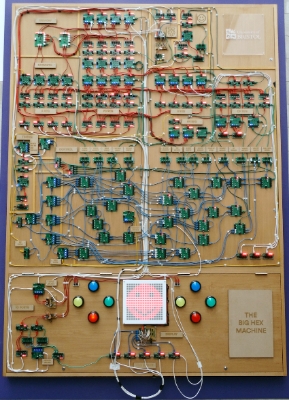Sigfox Raises $159M in Funding to Expand IoT Network
 SigFox says there are 10 million objects registered on its network, spanning 26 countries.
SigFox says there are 10 million objects registered on its network, spanning 26 countries.
 SigFox says there are 10 million objects registered on its network, spanning 26 countries.
SigFox says there are 10 million objects registered on its network, spanning 26 countries.
 AWS customers can now subscribe to SaaS applications directly through AWS Marketplace.
AWS customers can now subscribe to SaaS applications directly through AWS Marketplace.

I’m at Networking Field Day 13 this week. You can imagine how much fun I’m having with my friends! I wanted to drop some quick thoughts on visibility for this week on you all about what we’re hearing and raise some interesting questions.
Visibility is a huge issue for companies. Seeing what’s going on is hard for people. Companies like Ixia talk about the need to avoid dropping any packets to make sure we have complete knowledge of the network. But that requires a huge amount of hardware and design. You’re always going to need traditional monitoring even when everything is using telemetry and other data models. Make sure you size things right.
Forward Networks told us that there is an increasing call for finding a way to monitor both the underlay network and the overlay network. Most overlay companies give you a way to tie into their system via API or other telemetry. However, there is no visibility into the underlay because of the event horizon. Likewise, companies like Forward Networks are focusing on the underlay with mapping technologies and modeling software but they can’t pass back through the event horizon to see into Continue reading
Hey, it's HighScalability time:

The race toward exascale supercomputing gets a lot of attention, as it should. Driving up top-end performance levels in high performance computing (HPC) is essential to generate new insights into the fundamental laws of physics, the origins of the universe, global climate systems, and more. The wow factor is huge.
There is another area of growth in HPC that is less glamorous, but arguably even more important. It is the increasing use of small to mid-sized clusters by individuals and small groups that have long been reliant on workstations to handle their most compute-intensive tasks. Instead of a small number …
Wringing Cost and Complexity Out of HPC was written by Nicole Hemsoth at The Next Platform.
The post Worth Reading: Regulating IoT appeared first on 'net work.
 No application is immune to poor performance.
No application is immune to poor performance.
Congratulations! You’ve decided to make the change your application environment with Docker Datacenter. You’re now on your way to greater agility, portability and control within your environment. But what do you need to get started? In this blog, we will cover things you need to consider (strategy, infrastructure, migration) to ensure a smooth POC and migration to production.
1. Strategy
Strategy involves doing a little work up-front to get everyone on the same page. This stage is critical to align expectations and set clear success criteria for exiting the project. The key focus areas are to determining your objective, plan out how to achieve it and know who should be involved.
Set the objective – This is a critical step as it helps to set clear expectations, define a use case and outline the success criteria for exiting a POC. A common objective is to enable developer productivity by implementing a Continuous Integration environment with Docker Datacenter.
Plan how to achieve it – With a clear use case and outcome identified, the next step is to look at what is required to complete this project. For a CI pipeline, Docker is able to standardize the development environment, provide isolation of the applications and their dependencies Continue reading
 Nervana approaches consciousness.
Nervana approaches consciousness.
 The industry seeks to address interoperability among network virtualization (NV) implementations, but getting networking vendors to work together remains a challenge.
The industry seeks to address interoperability among network virtualization (NV) implementations, but getting networking vendors to work together remains a challenge.